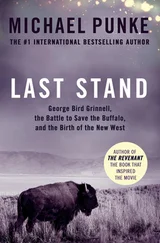While I was on the conference call, Dick Fuld phoned me to report that he hadn’t yet heard from Bank of America. I reassured him that we were doing everything we could, then I got hold of Ken Lewis and let him know that I had passed on the word about Countrywide.
“I’ve spoken with both Ben and Tim. They understand how important this is,” I said, assuring him the issue could be resolved. At my urging, he agreed to send a team to Lehman right away.
A few minutes later, I heard back from Lewis. He said that he and Fuld had spoken, and they were going to begin discussions. Dick called after that, excited, to say that Lewis’s team was ready to go. Despite all the back-and-forth of that afternoon and evening—we logged nearly a dozen calls with Lewis or Fuld in three hours—I wasn’t completely convinced of Lewis’s seriousness. My doubts only grew when he called back one last time and once again pressed the point about his unhappiness over the Countrywide business. He wanted to be sure to get that matter resolved with the Fed.
I called Dick a little after 7:00 p.m. to reassure him that Lewis was still in the game. “We’ve got some things to work out,” I said. “But he will be getting there.”
That day the Dow had fallen 280 points, to 11,231, erasing Monday’s gains. Lehman shares were down 45 percent, to $7.79, and its CDS had jumped by nearly 50 percent, to 475 basis points. And there was other worrisome news: investors concerned about AIG’s exposure to mortgages had driven its stock down 19 percent, to $18.37.
But AIG was not my foremost concern that night as I lay sleepless, wondering how Lehman would manage to pull through to the weekend.
Three days was a long time.
Wednesday, September 10, 2008
I had barely gotten to my office early Wednesday morning when Dick Fuld called to let me know that BofA still hadn’t shown up. It was just after 7:00 a.m.
“We haven’t heard from them,” Dick said, exasperated. “We missed a whole night.”
“You haven’t heard a thing?”
“Nothing,” he said.
It was a bad start to a bad day. I assumed that the Fed still hadn’t satisfied Ken Lewis on BofA’s capital issue, so I followed up with Tim and Ben. Less than an hour later, Lehman pre-released its third-quarter results—a $3.9 billion loss, stemming from a $5.6 billion write-down on residential and commercial real estate. The firm also announced that it would sell a majority stake in its asset-management subsidiary, Neuberger Berman, and spin off between $25 billion and $30 billion of its commercial real estate portfolio.
Investors were having none of it. Lehman’s shares fell in premarket trading, while its CDS jumped to 577 basis points. The market smelled a corpse.
Even as I wondered whether Bank of America would come through, another possible partner for Lehman popped into view, taking me by surprise. Bob Steel—my former undersecretary for domestic finance, now CEO of Wachovia—called just before 8:00 a.m. to say that he’d spoken with Bob Diamond, the president of Barclays, the British bank. The two bankers knew each other from Steel’s stint on Barclays’s board a few years before.
Steel told me that Barclays was interested in Lehman. I admit I had to ask him if they were serious. The British bank had not previously demonstrated an ability to move fast or to consummate major strategic transactions. Barclays was still stinging from losing a takeover battle in 2007 for the Dutch bank ABN AMRO to the Royal Bank of Scotland. I also had some concerns about whether Barclays had the financial strength to do a Lehman deal.
Although I mentioned Barclays’s potential interest in my discussions that day with Tim, Ben, Chris, and the group in New York, we were focused on Bank of America. Lewis had promised to get back to us by Thursday evening if there were no leaks. We understood that the Charlotte bank might well decide against buying Lehman or insist, despite my guidance to Lewis, that it would need financial support.
In my afternoon conference call with Tim and Treasury staffers, we again discussed how we could help Lehman. My team and I believed we should emphasize publicly that there could be no government money for a Lehman deal. To my mind, this was the only way to get the best price from a buyer, and the only way to prepare the industry to be fully ready for the likelihood that it would need to participate in any solution.
“We need to do everything we can to fashion a private-sector alternative,” I told the group.
Tim agreed. He, too, favored an industry solution. But we both knew that if a Bear Stearns–style rescue was the only option, we would take it. As Tim put it, a Lehman failure would be more expensive for the taxpayers.
All of us were well aware that after Fannie and Freddie, the country, Congress, and both parties were fed up with bailouts. Obama and McCain, neck and neck in the national polls, each spoke out against them on the campaign trail. The previous day, in fact, McCain and Sarah Palin had published an op-ed in the Wall Street Journal entitled, “We’ll Protect Taxpayers from More Bailouts.” And just before our conference call had begun I’d spoken with Chris Dodd, who told me, “Fuld is a friend. Try to help, but don’t bail Lehman out.”
We discussed the worst-case scenario: no buyer for Lehman, no government authority to inject capital, and no legal authority to wind down a failing nonbanking financial institution. We knew a Lehman collapse would be a disaster. With roughly $600 billion in assets, the firm was bigger and even more interconnected than Bear Stearns. Under those circumstances, how could we stabilize the market?
After the conference call, Tim and I spoke privately, reviewing the situation: Neither of us had the authority to put money in the entity Lehman hoped to create to hive off its commercial real estate assets—unofficially known as Spinco. And clearly, the embedded losses were proving to be too big for Lehman to attract private capital. It was unlikely that a restructuring plan could help the firm now.
Just three days after the historic government takeover, the GSEs were already old news to the public. We hadn’t taken our eyes off them, however. Mortgage rates had decreased, but they were still too high, given that the GSEs were now officially under the U.S.’s wing.
Meantime, I continued to reach out to unhappy GSE employees. Wednesday afternoon I met with Fannie Mae staff at their Wisconsin Avenue headquarters, just a little ways from the National Cathedral. I encountered an even tougher group than I had at Freddie’s headquarters: they pushed back harder, upset about the losses on their shares, and worried about Fannie’s long-term prospects. I answered their questions candidly, explaining how crucial their company would be to helping get the nation through this crisis, but the sight of their unhappy faces stayed with me after I left.
That evening, when I checked in with Ken Lewis, I learned that he had not yet sent a team to New York. He still hadn’t resolved his issues with the Fed. But he assured me that BofA would be able to move quickly, given that they’d done due diligence on Lehman in the summer.
I called Tim to see when the Fed would clear up the problem with BofA. He assured me he would immediately work to find a solution.
Thursday, September 11, 2008
Early Thursday morning, not long after I arrived at my desk, Ken Wilson suggested I call Bob Diamond at Barclays. The British bank needed more encouragement. When I reached him, he confirmed that his bank was interested in acquiring Lehman.
“You’ll need to move quickly,” I told him. “I also want to let you know that we are unable to put public money in.”
Читать дальше












